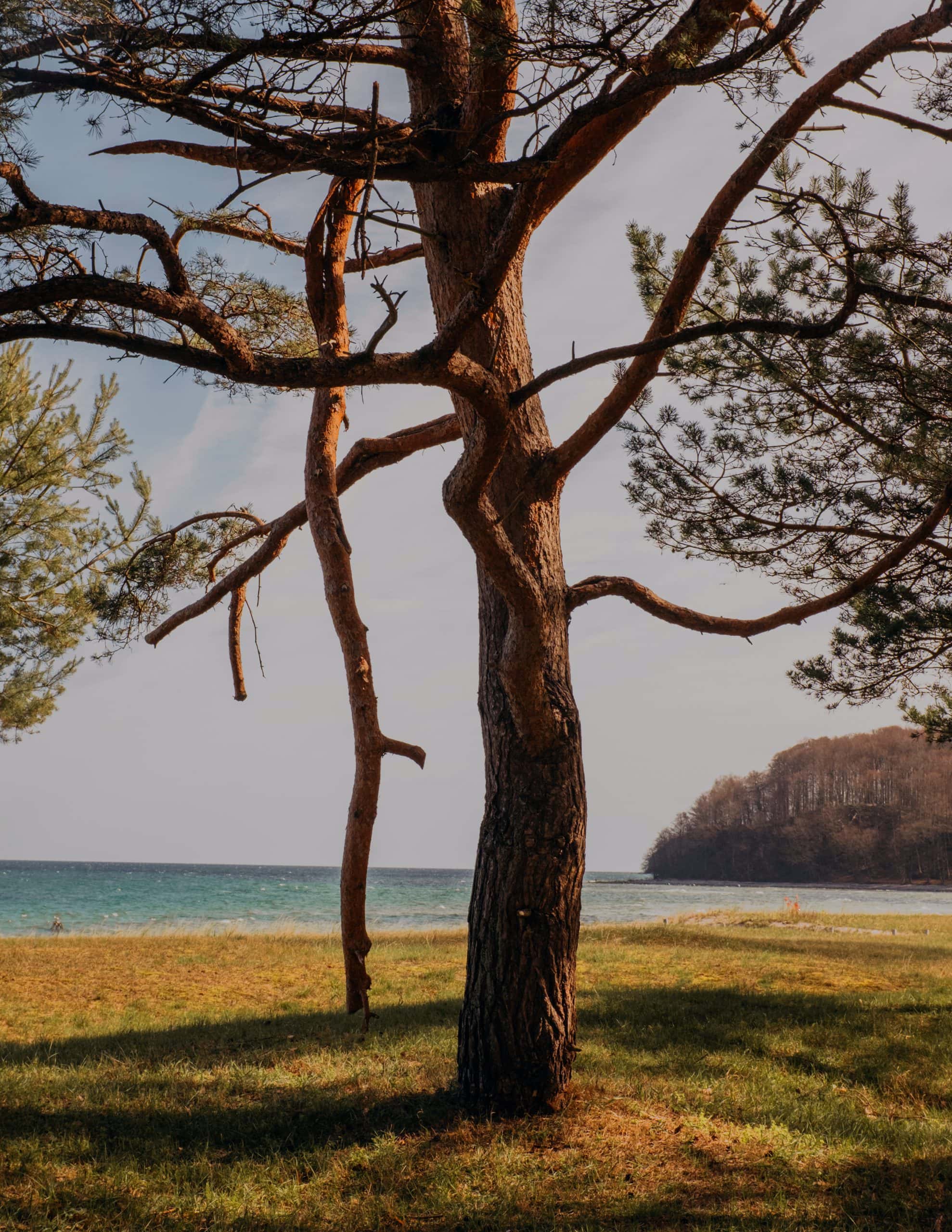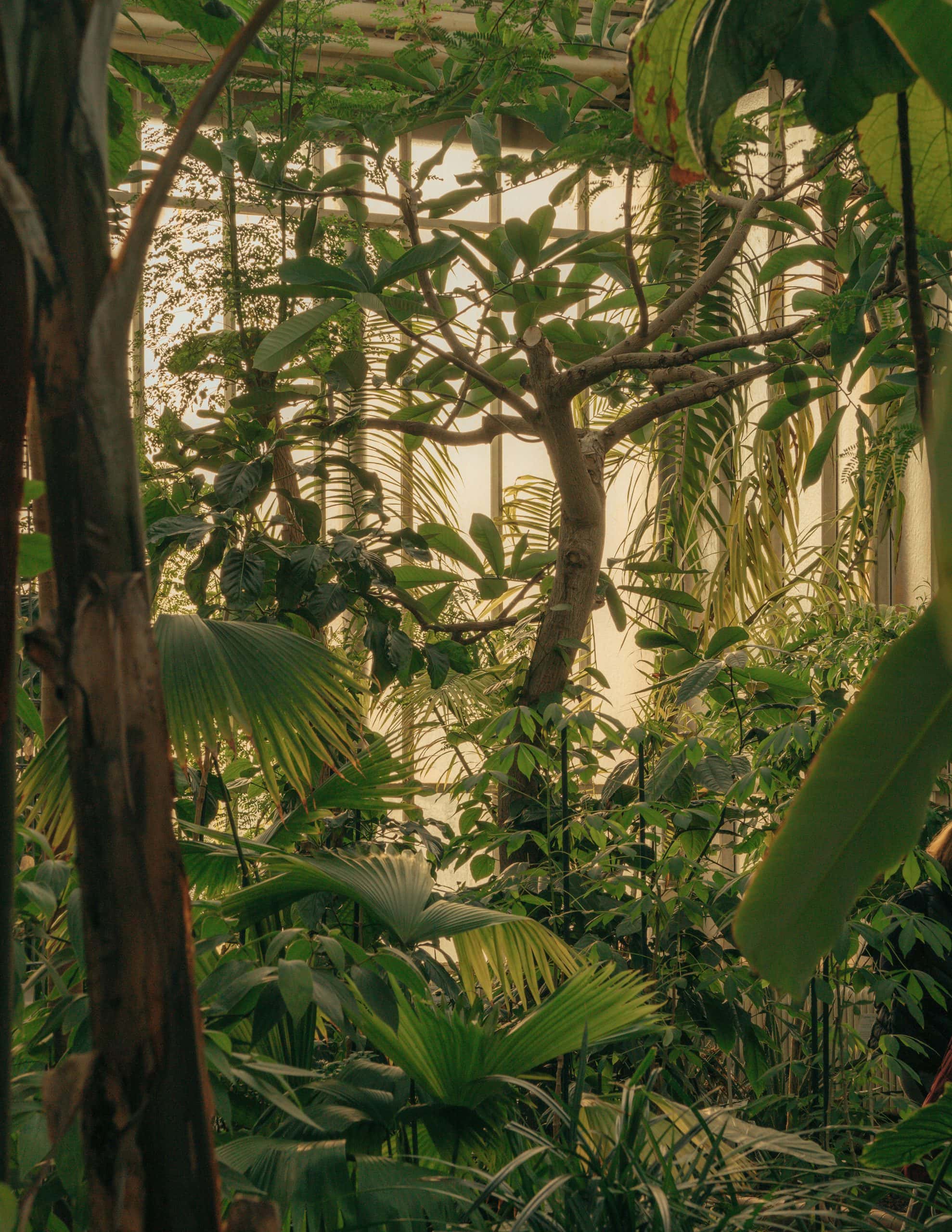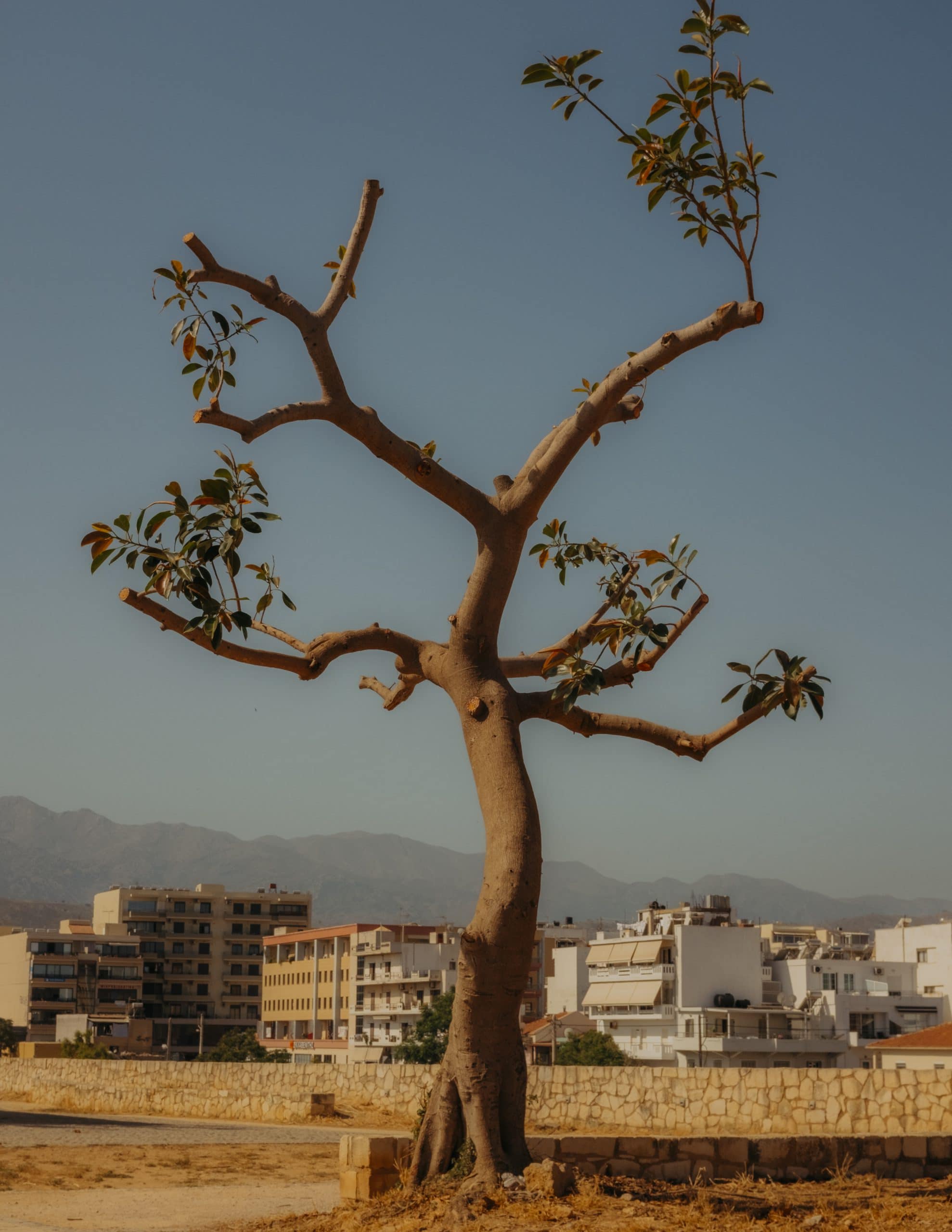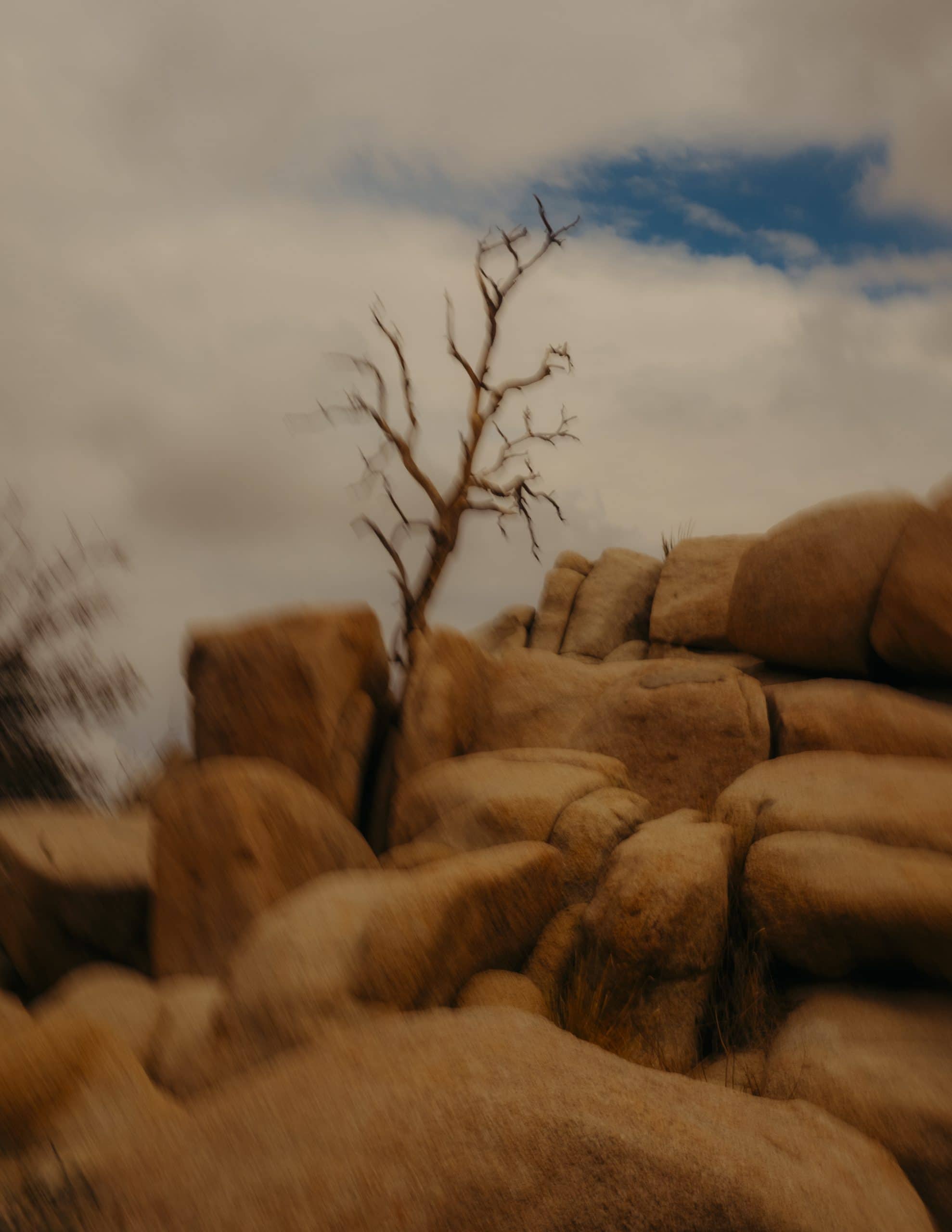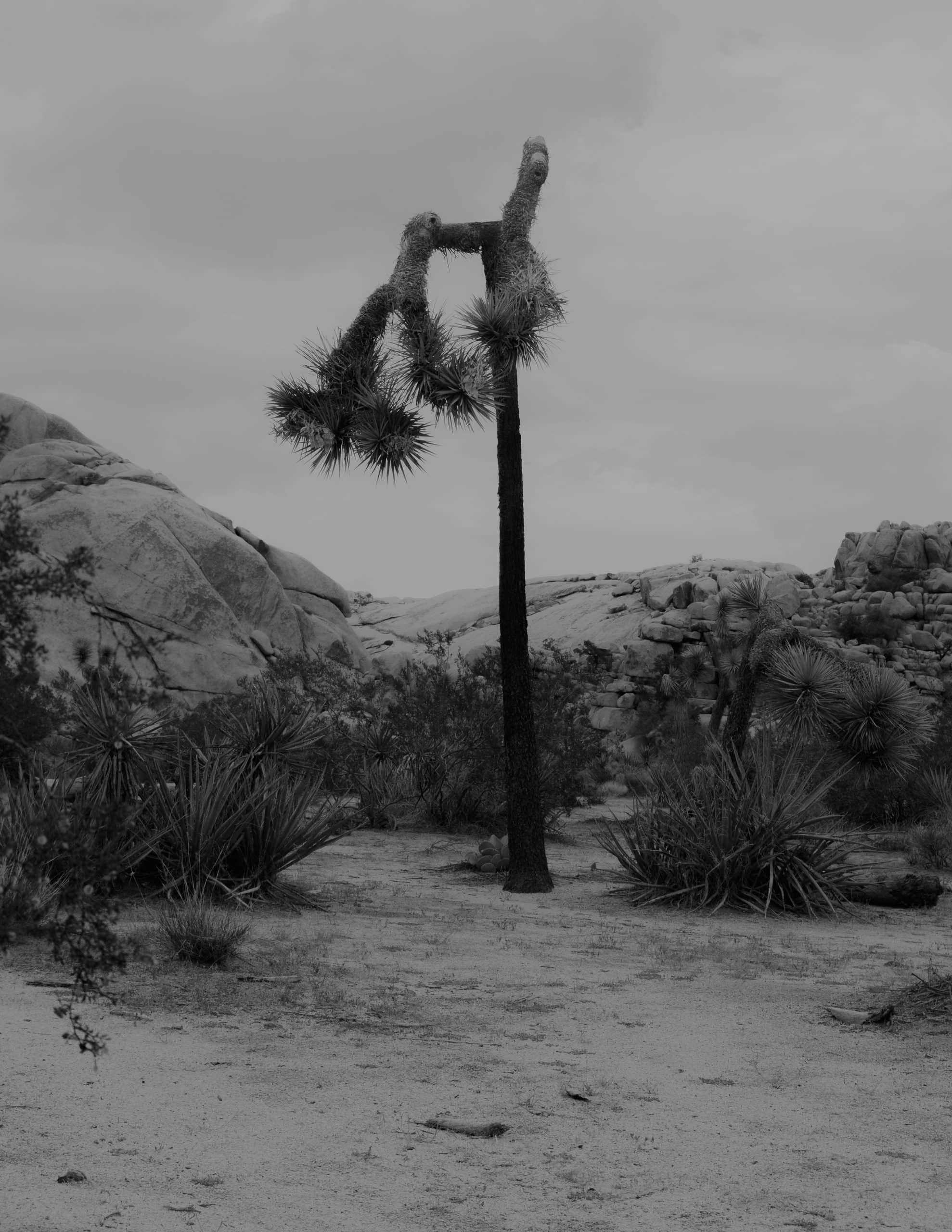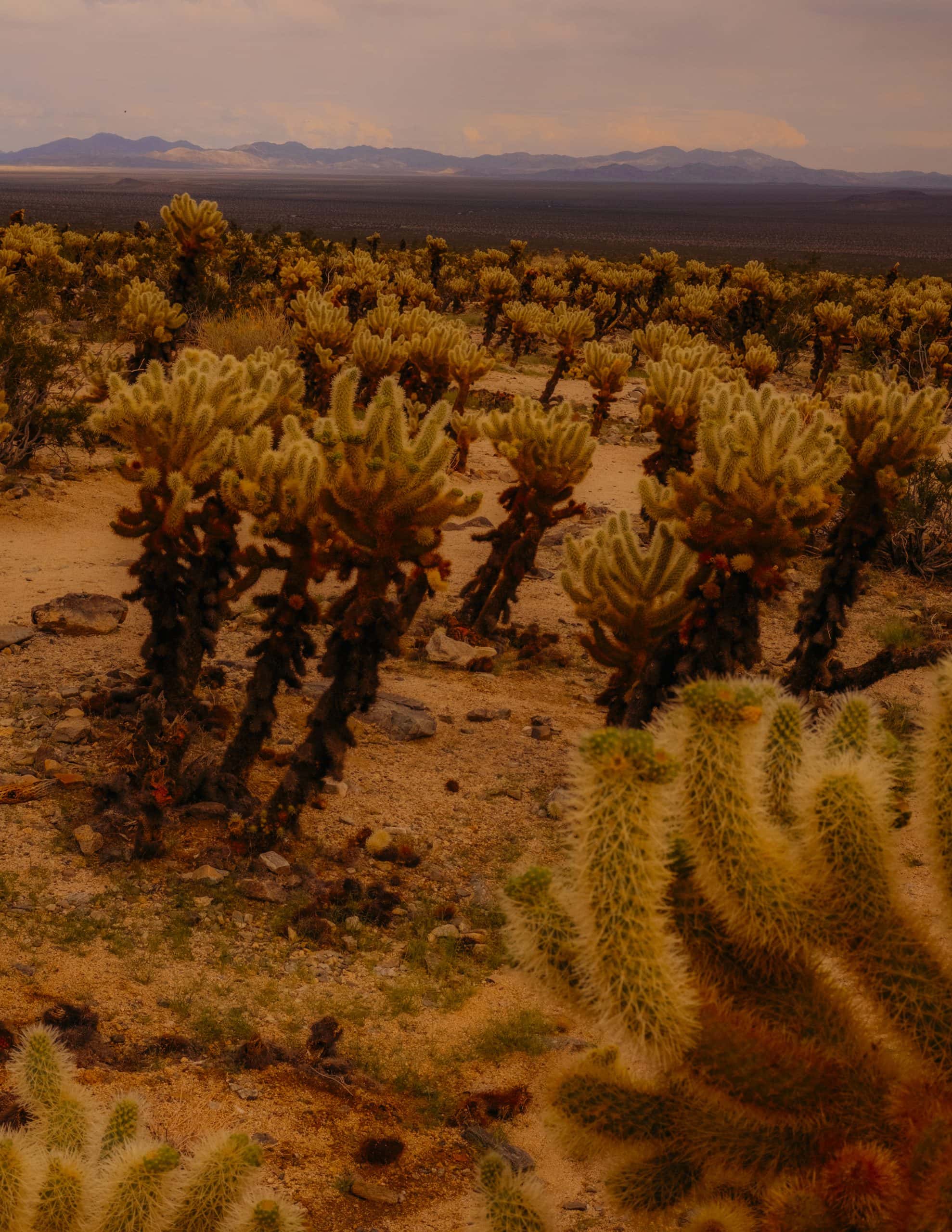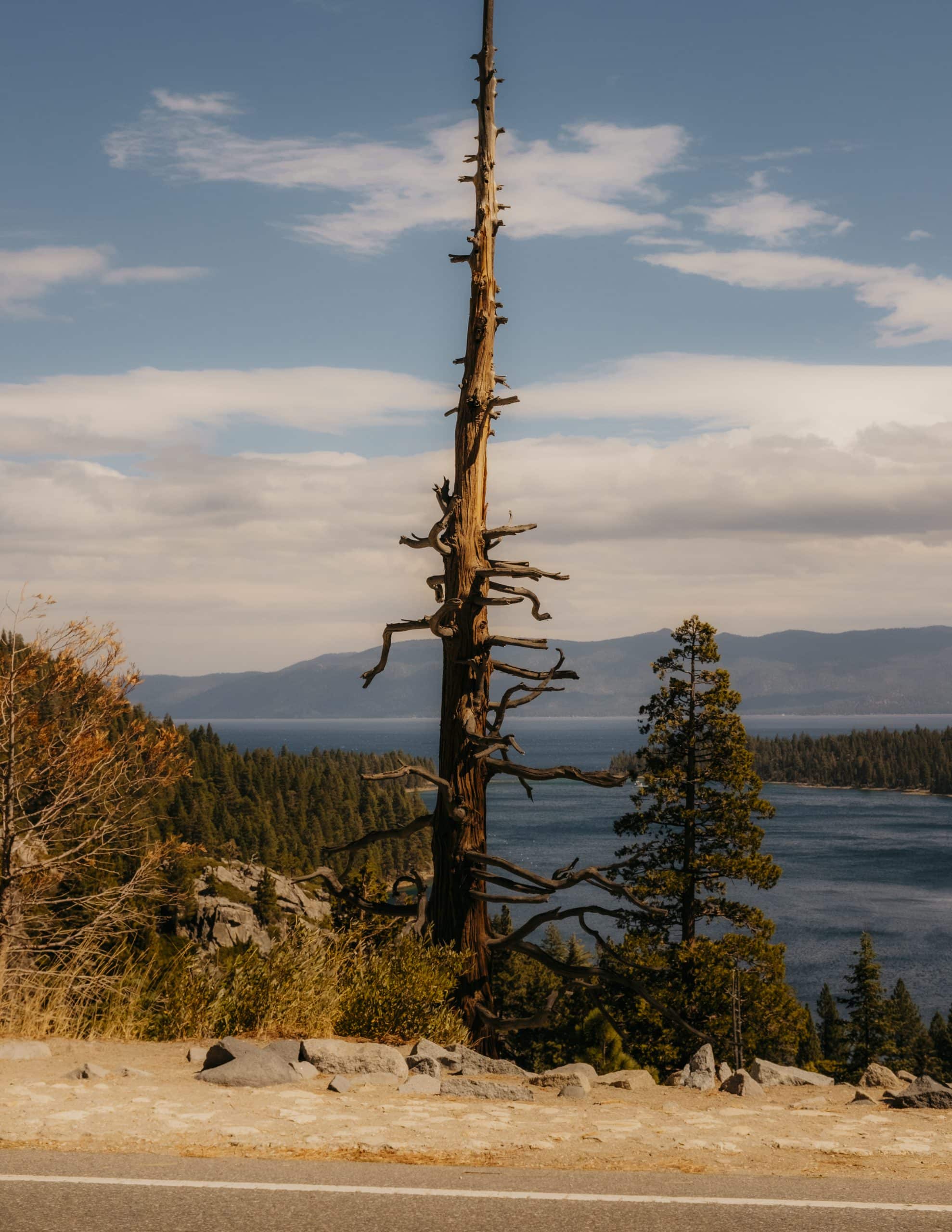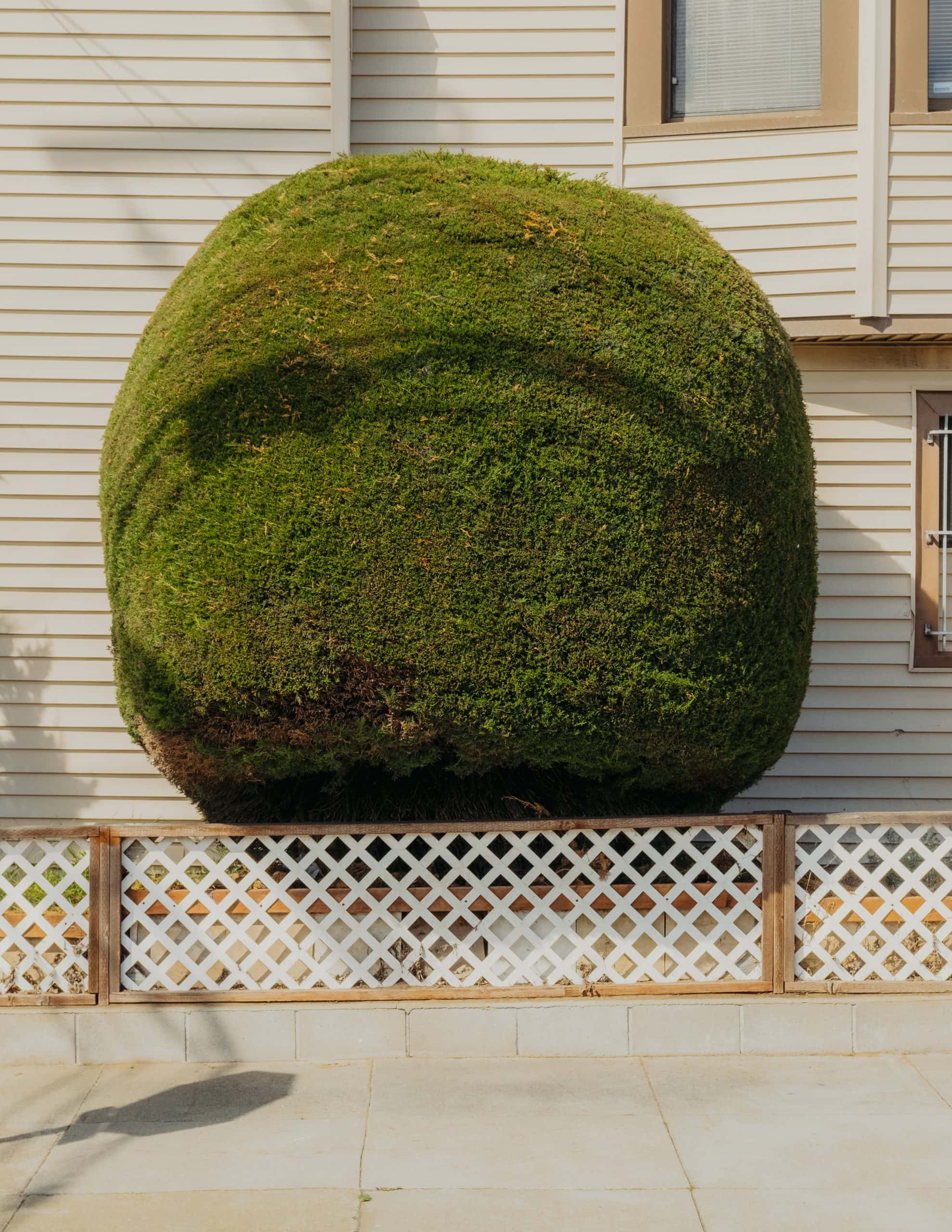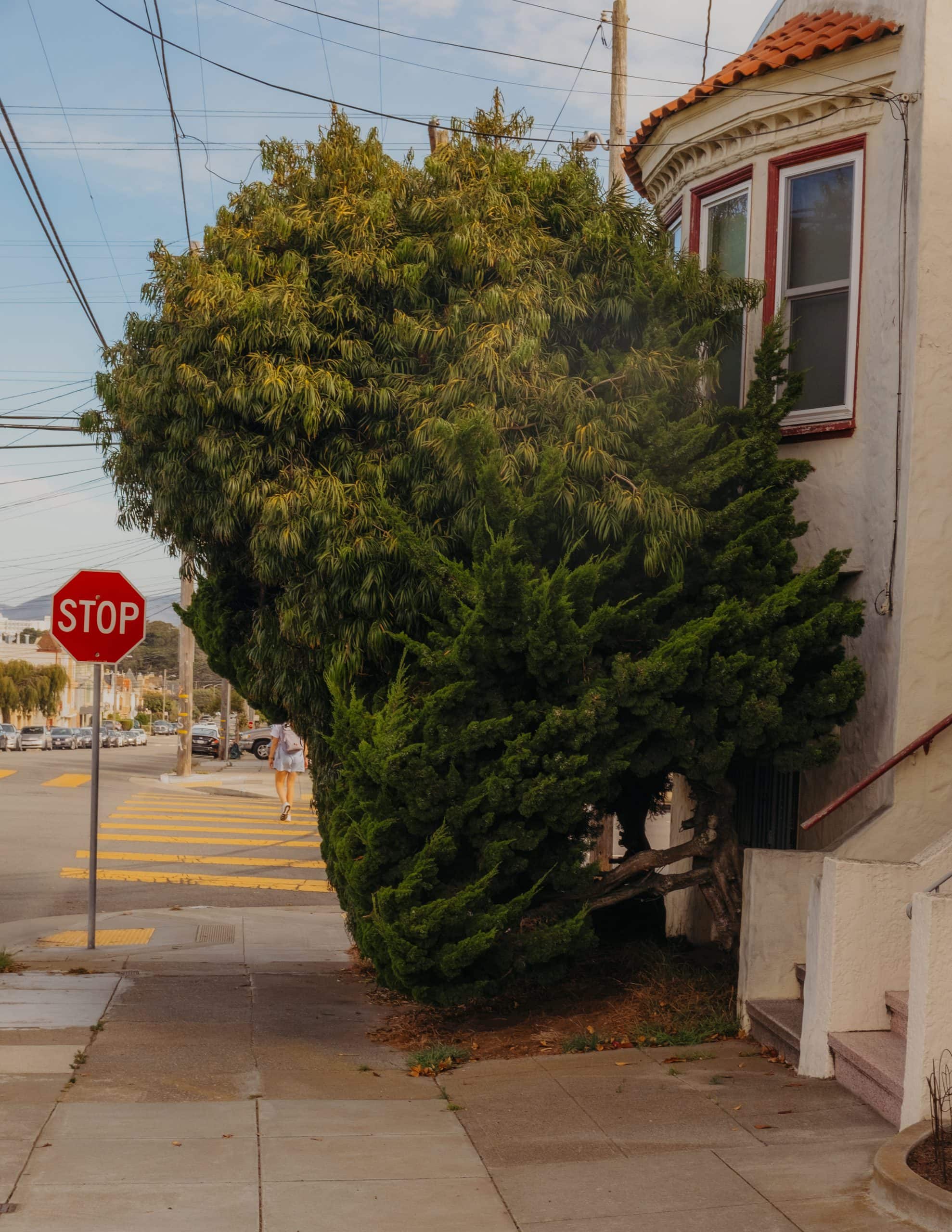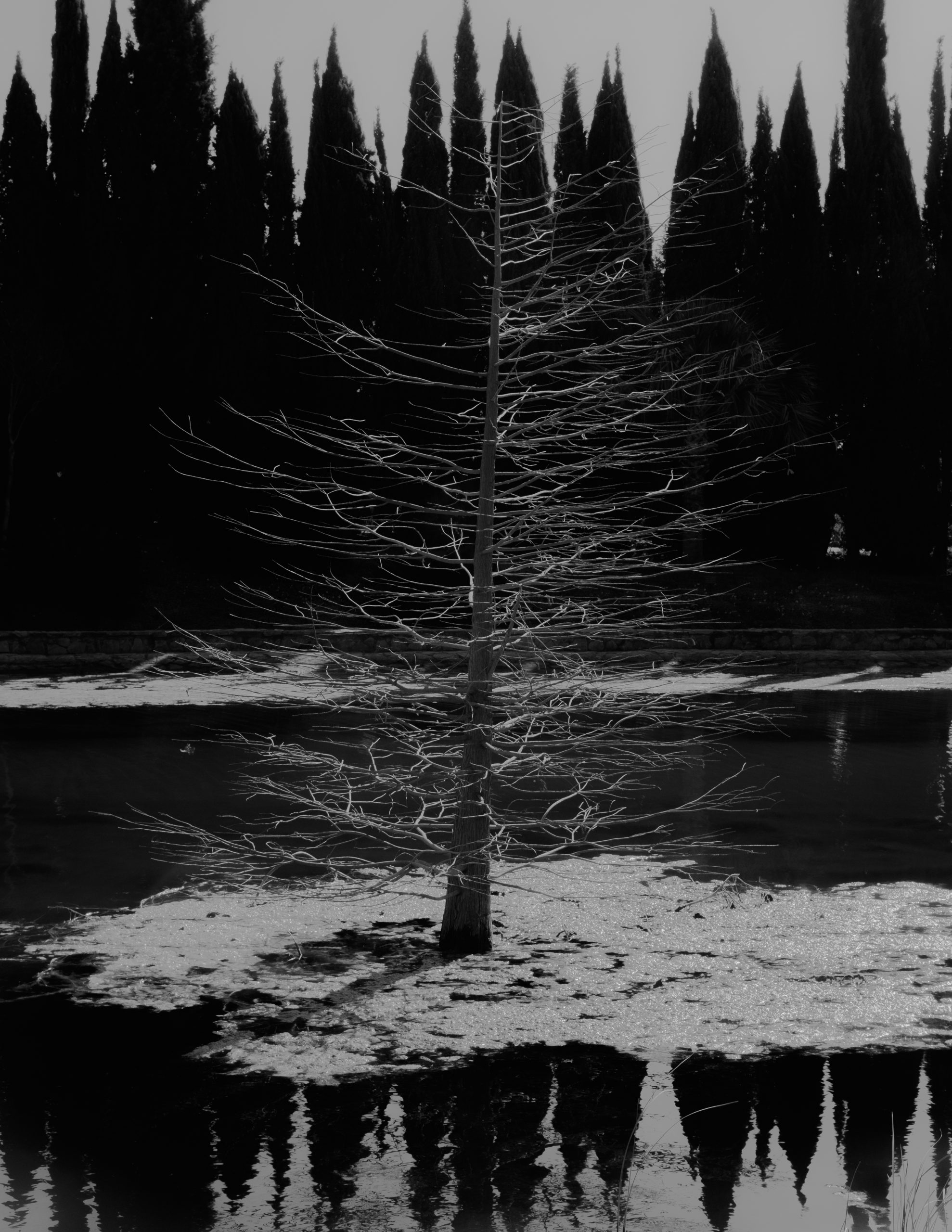In this interview, Simone Lorusso explores Maximilian Virgili’s perspective on nature, the inspiration behind his captivating tree collection, and the potential intersections between his visual exploration and socio-political themes.
Simone Lorusso: It’s a delightful opportunity to engage in conversation with you, Maximilian. Could you please provide an introduction and offer insights into your background as a photographer?
Maximilian Virgili: Hey Simone, thank you for this interview. I am based in Berlin, Germany. Following my graduation from the University of Siegen with a Bachelor of Arts in 2013, I gained experience as an assistant to the artist Peter Granser for a few months before establishing my residence in Berlin. My photographic work predominantly delves into the realms of the mundane and the grotesque, exploring the interplay between humans and their environmental surroundings—treading the fine line between intentional staging and coincidence.
SL: To what extent has Berlin influenced your artistic viewpoint and the themes you opt to delve into through your work?
MV: It has taught me valuable lessons about dealing with frustration on an artistic level. Berlin, strangely enough, never served as a significant creative inspiration to me. Initially, I hesitated to tap into the city’s clichés, and I waited for something to click or interest me. Unfortunately, nothing did in the beginning, driven by my fear of making mistakes. Eventually, I challenged myself to roam around and capture whatever caught my attention. That’s when I initiated my series, CONCRETE PARADISE—an homage to construction sites in Berlin. So, in a way, Berlin guided me towards trusting my instincts and also instilled in me the importance of patience in the creative flow.
SL: How does your connection with nature, providing you with a unique sense of peace, influence your creative process and the choice of subjects you decide to capture through your lens?
MV: I am inherently an impatient person, particularly in urban settings, where my impatience is often at its peak. However, when I immerse myself in nature—be it in the mountains, the forest, or by the sea—it has a calming effect on me, similar to meditation. In these natural environments, I become more attuned to the details surrounding me, observing and listening to my inner self. My photographic practice is deeply intrinsic, fuelled by instincts. Being in nature amplifies my emotions and, consequently, enhances my perception.
SL: Shifting our focus to nature, I’m particularly intrigued by the collection of trees you’ve started. I’m curious to know when you began this collection and the story behind it. Please share more details.
MV: It’s funny because I never consciously planned this collection; I only recently discovered that I have accumulated many tree photos in my archive. It’s perhaps an unconscious inclination to photograph them. Growing up next to a vast forest
and spending my childhood running around the woods, climbing trees constantly, fostered an early and deep connection with them. Trees exhibit so much personality; they can be massive, impressive, even theatrically dramatic, yet also slender, fragile, and shy. Many of them are ancient, having “witnessed” and felt so much, silently enduring it all. They grow freely, assuming peculiar shapes. The stranger, the more beautiful.
SL: Are there ongoing scientific studies or discoveries in this field that particularly intrigue you and that you would like to visually document?
MV: Taking action with this collection and expanding it is something that has just recently caught my attention. While I hadn’t considered it before, it’s an intriguing idea to begin exploring relevant studies and delving deeper into this topic.
SL: In your opinion, are people generally aware of the complexity and sophistication of plant communication, and does this knowledge impact their perception of nature?
MV: Our awareness of the planet seems to be diminishing, overshadowed by the constant demands of our busy lives and the pervasive influence of technology. Nature, once a profound sanctuary, has been relegated to a mere occasional escape, a therapeutic retreat when we find ourselves overwhelmed. Its inherent role is to heal and vitalize us, an allegedly boundless resource. Unfortunately, we neglect our responsibility to care for it, taking its presence for granted simply because it has always surrounded us. Nature, an intricate ecosystem perfected over millions of years, operates seamlessly without the need for human intervention—a fact we often tend to overlook.
SL: To what degree has the socio-political examination of trees intersected and influenced your visual exploration and creative pursuits?
MV: Up until now, the series hasn’t been distinctly shaped by socio-political discourses. As mentioned earlier, it predominantly serves as a collection of individual images amassed over the years. Nonetheless, I believe that exploring themes like climate change, the deliberate destruction of rainforests, and the significance of urban planting has the potential to steer the series in a new and impactful direction.
SL: Looking ahead, how do you envision this research evolving in your future work? Are there specific locations or types of trees you are eager to explore and capture in your upcoming trips?
MV: The profound devastation of the rainforest and its repercussions on indigenous communities and the broader ecological balance of our planet is a subject that I could see myself pursuing photographically in the future.
